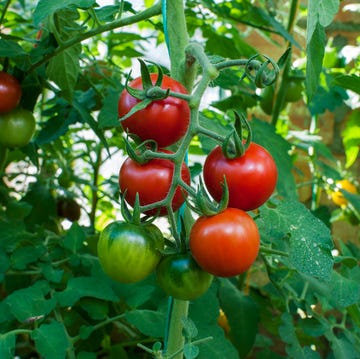- New research suggests that eating more potassium can help to lower your blood pressure more than decreasing your sodium intake.
- Other research backs this up.
- Doctors say that high blood pressure is complicated, though.
Nearly 120 million Americans have high blood pressure, a condition that raises the risk of heart attack, stroke, and other serious health complications. While many things can cause high blood pressure, new research suggests that a certain dietary tweak could help to bring it back down.
It’s adding more potassium, a mineral found in bananas and leafy greens, to your diet. Even more interesting: This could have a bigger impact than lowering your sodium intake, which is a standard dietary tweak when someone has high blood pressure.
It’s a stretch to say that eating more potassium alone will help get your blood pressure under control, especially if this is a chronic issue for you. But experts say that adding extra potassium to your diet may help complement other treatments or therapies recommended by your doctor.
And this is definitely something to talk to your doctor about, says Andrew Chang, M.D., assistant professor in the Department of Medicine, Division of Cardiovascular Diseases and Hypertension, at Rutgers Robert Wood Johnson Medical School. “Potassium intake is generally safe but is not for everyone,” he says. “Increasing potassium intake can be harmful for patients with kidney disease or taking certain medications.”
So, while you wait for that appointment, or if you’re just curious, check out what’s behind the potassium-blood pressure link, below.
Meet the experts: Cheng-Han Chen, M.D., is an interventional cardiologist and medical director of the Structural Heart Program at MemorialCare Saddleback Medical Center in Laguna Hills, CA. Jessica Cording, R.D., is the author of The Little Book of Game-Changers. Andrew Chang, M.D., is an assistant professor in the Department of Medicine, Division of Cardiovascular Diseases and Hypertension, at Rutgers Robert Wood Johnson Medical School.
What Did The Study Find?
The study, which was published in The American Journal of Physiology, Renal Physiology, conducted mathematical models to look at the impact of sodium and potassium on blood pressure. The researchers found that increasing potassium intake could help to lower blood pressure up to three times more than cutting sodium intake. “Excessive dietary sodium raises blood pressure, whereas a high potassium diet has the opposite effect,” the researchers wrote in the study.
This isn’t the first study to suggest that adding more potassium to your diet may help to lower blood pressure. A study published last year in the Journal of Human Hypertension analyzed the urine of nearly 21,000 people and also discovered that the impact on blood pressure was greater for adding more potassium than decreasing sodium.
Why Might Potassium Help To Lower Blood Pressure?
There are a few things behind this. “Potassium and sodium work together,” says Jessica Cording, R.D., author of The Little Book of Game-Changers. “In our cells, there is a balance of sodium and potassium that the body likes to maintain.”
Potassium can actually reduce the effects of sodium, says Dr. Chang. While having too much sodium is linked to high blood pressure, potassium causes you to lose sodium through your urine, Dr. Chang explains.
Not only that, potassium can help to ease tension in the walls of your blood vessels, lowering blood pressure as a result, says Cheng-Han Chen, M.D., interventional cardiologist and medical director of the Structural Heart Program at MemorialCare Saddleback Medical Center in Laguna Hills, CA.
While decreasing sodium may also be necessary, adding more potassium can be an easier dietary tweak for some people to make, Dr. Chang says. “Lowering blood pressure by decreasing sodium intake can be difficult and may be unsuccessful because of the high sodium content in modern diets and many of the foods available to us in supermarkets,” he says. “Blood pressure lowering may be greater with potassium intake because the addition of potassium-rich foods may be an easier adjustment for people to make than the elimination of high sodium foods.”
How Much Potassium Do I Need?
Recommended potassium intakes vary slightly by person. However, most adult women should aim to have 2,600 milligrams of potassium a day, while most adult men should strive for 3,400 milligrams daily, according to the National Institutes of Health (NIH). Those recommendations increase to 2,900 milligrams during pregnancy and 2,800 milligrams while nursing for women 19 and older.
Foods That Contain Potassium
You can get potassium from a lot of different food sources, but remember to talk to your doctor before adding more of the mineral to your diet. These are some of the biggest sources, per the NIH:
- Dried apricots, ½ cup (755 milligrams)
- Lentils, 1 cup (731 milligrams)
- Mashed acorn squash, 1 cup (644 milligrams)
- Dried prunes, ½ cup (635 milligrams)
- Kidney beans, 1 cup (607 milligrams)
- Banana, 1 medium (422 milligrams)
Other Steps You Can Take To Lower Blood Pressure
Cording recommends taking a close look at sneaky sources of sodium in your diet. “Ninety-nine percent of the time it’s more ultra-processed foods, restaurant foods, and things like sauces and condiments,” she says. “But even some healthier foods like olives, pickles, sauerkraut, and cheese can contribute.”
Blood pressure is complicated, and there’s often more to lowering it than just making dietary tweaks, Dr. Chen says. “There are a lot of lifestyle changes we would make beyond just making a healthy, [balanced] diet low in sodium and high in potassium,” he says. That’s why it’s important to have a personalized conversation with your healthcare provider, but some of those changes may include getting regular exercise, trying to maintain a healthy weight, getting good quality sleep, and doing your best to control your cholesterol and blood sugar.
“Together, those are the best chances people have of keeping their blood pressure under control,” Dr. Chen says. However, some people may also need a medication, which should be discussed with a doctor.













